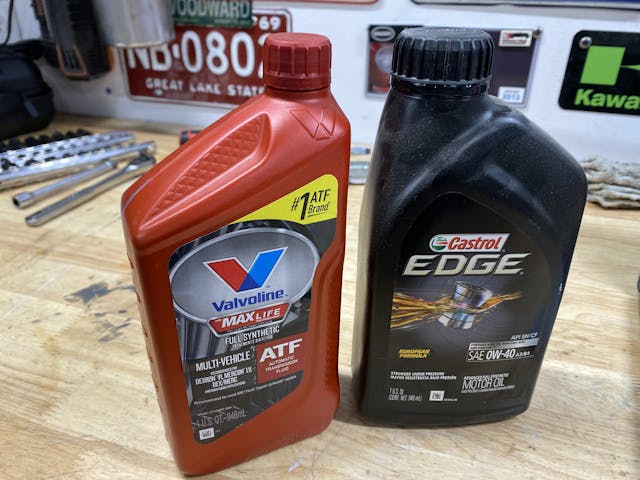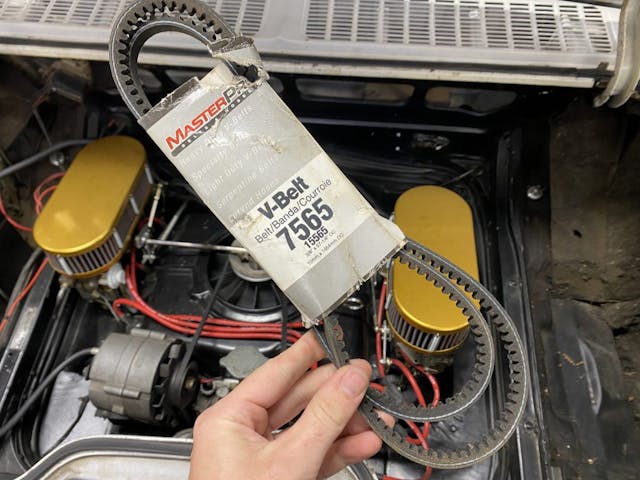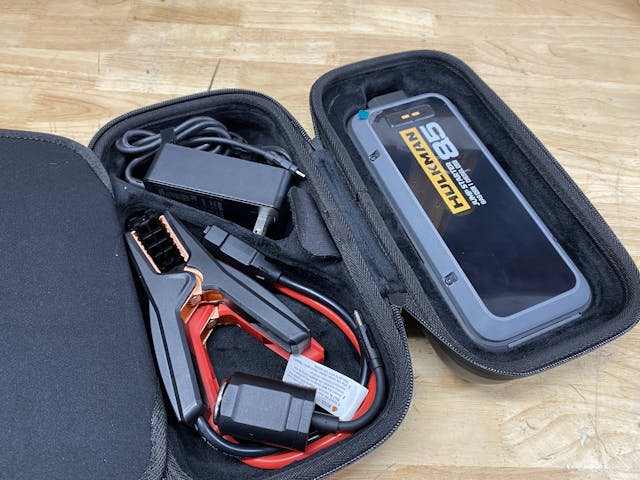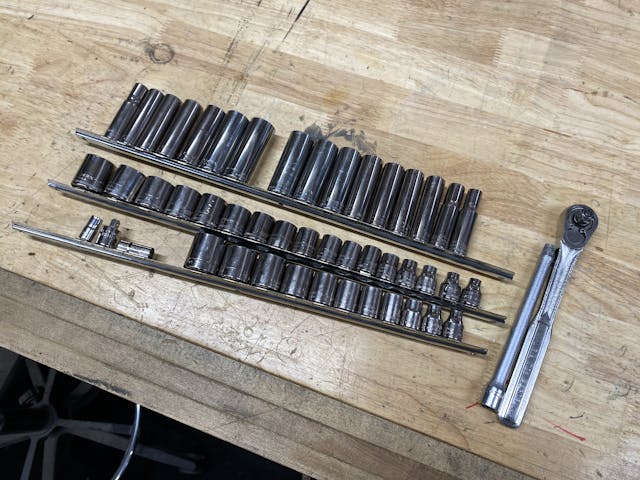Media | Articles
6 essentials for your travel toolkit
Don’t let the fall colors scare you into pickling your car for winter just yet. In many parts of the country, this is the best time to be out on the road. Color tours are spooling up all over the northeast, and as the temps drop in the southwest, vintage cars are returning to the roads—but that means more than a few will likely end up on the roadside too. Set yourself up for success and pack a toolkit to at least handle the basics.
Of course, for bigger trips or questionable cars, it makes sense to pack a big kit that could cover just about everything, but that is not right for every person or situation. As the old saying goes, the best time to build a toolkit for your vintage ride was yesterday and the second best time is right now. Even if you aren’t handy or do your own maintenance it is never known who might stop and offer help and without tools that good Samaritan is reduced to good thoughts. Here are six basic essentials for your travel toolkit.
Screwdrivers
Much of any car is assembled with slotted and Phillips-head screws, and even a precursory inspection often requires removing an access panel or cover. Sometimes a noise or vibration does not indicate immediate death for your car or engine, and after inspection you can determine if it is safe to carry on your way despite some part or piece misbehaving. A screwdriver can also act as a stethoscope in a pinch too, allowing you to track down a goofy noise for better diagnostics with less disassembly.
Pliers
Whether you need to deal with a stubborn spring hose clamp or moving a piece that got a little hot, pliers are the tool for the job. At bare minimum you should carry needle nose and slip joint pliers, as these will cover the vast majority of tasks on the roadside. Bonus points if your needle nose pliers have a cutting edge, as this will work for wiring repairs or stripping.
Fluids
We can’t live without water, and your engine can’t live without oil and coolant. They’re the fluids you’re most likely to lose and can still safely refill and continue your drive. Some folks will tell you to carry brake fluid, but if you’re losing brake fluid, that’s not something to top off and continue. Your brakes are a critical safety system that should be repaired properly by a pro, and your Hagerty roadside assistance card is going to be the best tool to use if the brake reservoir runs out while on the road.
Marketplace
Buy and sell classics with confidence
Belts
Most vintage engines run simple V-belt setups, but that system has been usurped by the serpentine belt. Relying on a chain parts store to have a variety of V-belts can be a big ask since they likely don’t sell many and thus only stock the most popular sizes. Belts are light and pack down small, so having the proper belts for your car is a no brainer.
Jump pack
Batteries go flat. It just happens sometimes, especially on vintage electrical systems in which small draws can go unnoticed until its too late. A jump pack can provide the juice to get your engine running again or keep it running in a real pinch. Also, most jump packs these days are small and light, while also packing more punch than ever. A bonus is it allows you to charge your phone or other critical accessories if you find yourself stranded and waiting for a tow.
Sockets and wrenches
Yeah, duh. It’s hard to take anything apart or service pieces without the ability to remove nuts and bolts. If you are handy and want to carry the bare minimum, start by looking under the hood and picking just the wrenches and sockets for jobs you are willing to do on the roadside. If in doubt, grab a full set of shallow and deep sockets for both SAE and metric, because you never know what hack might be hiding under the hood where someone previously mixed hardware. This also gives you the chance to be the hero in someone else’s story when you have the socket they need in order to leave the car show.
Bonus: Tool roll
Personally, I hate random things rolling around my car, doubly so if they make noise. A simple tool roll is cheap and allows you to keep all your trip-saving bits and pieces together. Tuck it all under a seat or in back with the spare tire, and rest easy each time you take the car out knowing that you’ve got at least the bare minimum needed to keep your trip on the road rather than the shoulder.
Is there something you’d add to a super basic toolkit? Leave your suggestion in the comments below.
Check out the Hagerty Media homepage so you don’t miss a single story, or better yet, bookmark it.




























Seems to me like you missed the most important tool, your cell phone.
Some of these tools suggest that you have spare parts with you that you can replace on the road. Do you really have them with you? If so, tools are great. In my 60 years of driving, only twice have I pulled out a tool. I had a ’37 Chevy recently rebuilt and it had a fuel flow problem, I pulled the fuel pump, cleaned it out and got going again. I also had a new ’69 Triumph Spitfire that suffered a broken push rod. I was able to remove the broken pieces and remove the adjacent push rod and then drove about 10 miles to the nearest town on 3 cylinders where I found a guy to weld the broken push rod back together. It was a Sunday in the middle of Kansas, no parts available there. The welded push rod got me the 175 miles into Kansas City where I got parts the next day.
who goes anyplace without their cell phone…please
Bungee Cords, different sizes.. ( I hit a raccoon and tore up the front bumper cover and without those bungee cords, I would have dead in the water 20 miles to
The nearest exit on I80 in the middle of Iowa at -20 below zero, (not wind chill)!!
Vise-Grips! Better yet, two.
Keep some radiator stop leak in the kit along with the two gallons of water
I carry a small 14”x20” suitcase with sockets, ratchet, extension, screwdrivers, open/box end wrenches, multimeter, pliers, and a 17mm Allen wrench under the hood of my beetle. I also carry bulbs, fuses, a spare carburetor, spare coil, and a pre-timed distributor, just because.
A good flashlight just in case your trouble is at night.
I carry spare fuses and bulbs including a headlight bulb. ATF is only good for vehicles with a dipstick.
What about vice grips, jumper wires with alligator clips, 12V test light, zip ties, flashlight, some twisting wire, and a small hammer.
For the older Mopars I carry a spare ballast in each one of my cars and truck
Where’s the adjustable open wrench (Crescent wrench}?
Beer in case its un-repairable!
I keep a 2” thick, 1foot square piece of Oak planking to put under a bottle jack, plus a rubber wheel chock. How many times have you been on the shoulder of a road, and found the ground too soft to support the jack safely?
Zip ties and tape
A multimeter.
I also carry duct tape, electrical tape, small roll of wire, fuses, gloves, a knife,